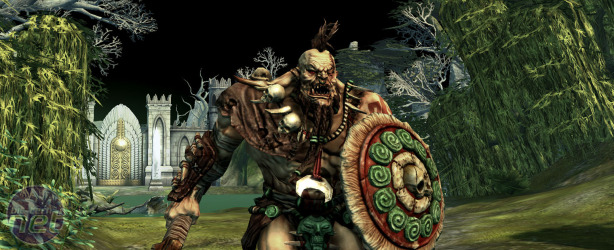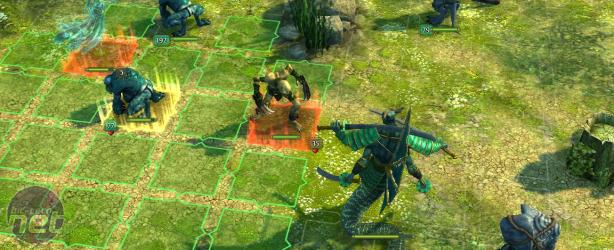
Might and Magic: Heroes VI Preview
Publisher: UbisoftPlatform: PC exclusive
Release date: 9 September 2011
The last time we saw a Heroes of Might and Magic game was when we were playing Heroes III, and given that this was seven years ago, we approached Might and Magic: Heroes VI with an open mind, curious to see what had changed.
For a start, it’s now in 3D, but even that’s not new to the series; Heroes V introduced 3D in 2006. If you’ve not twigged by now, the Heroes of Might and Magic series has been with us for quite a while. It’s a turn-based strategy game in which hero units gallop around a map gathering resources, fighting monsters and other heroes, while capturing buildings and settlements. Along the way, these heroes gain experience and level-up to gain new abilities, while also finding artefacts to give them certain bonuses.
Once you encounter an enemy creature, hero or army on the turn-based map, you’re dropped into a relatively small, gridded turn-based battle. Your units are represented by a single playing piece, with the number of members dictating how much damage it can deal and punishment it can take. You have up to seven units, and must manoeuvre them around the hex board and use their abilities in a chess-like way to best the other army. Heroes can pitch in with spells and abilities too, which can swing a battle.
As well as the heroes, settlements can also be upgraded, thus providing new units (which can be recruited once per week - every seven turns), enabling you to hire new heroes, add certain perks or trade and acquire more resources than just the buildings scattered around the settlements.
You can even upgrade unit-producing buildings to provide upgraded forms of units, but these won’t stack with the lesser versions and will cost more. Even though you can upgrade those lesser units, this brings the dilemma of whether it’s better to have loads of low-level units or fewer high-level.
It’s these nuances that come from millions of combinations of artefacts traits, skills, spells, upgrades and unit types that give Heroes games their reputation. For example, once you’ve acquired your first skill point for a hero, you can spend a good ten minutes just reading about the function of each spell or trait, and cross-referencing that with all the others. It takes so long, because there are so many skills and there's no easy way to compare them. This might seem unnecessary, but this old-school method of having to remember what you’re doing is crucial to the depth that Heroes games are intended to provide.
Of course, this is old news if you’ve played a Heroes game before at some point. The new news is that online features have been added to Heroes VI in the form of the Conflux. It seems that in the five years since the last Heroes game, someone’s logged onto that FaceSpace thing and decided that social networking is the future. The Confluence features enable all sorts of social networking features, such as sharing and comparing stats, receiving game news and posting in the message-board-like Confluence Orbs that appear on some maps. There are also more advanced online multiplayer abilities than before.
What's that, you say? You’ve got the dinner on, cripes is that the time and can you just play offline please? Well, yes, you can, but you'll then be denied the Dynasty Weapon and Dynasty Trait starting bonuses for campaigns, as well as the exclusive bonuses granted via the Altar of Wishes.

MSI MPG Velox 100R Chassis Review
October 14 2021 | 15:04











Want to comment? Please log in.